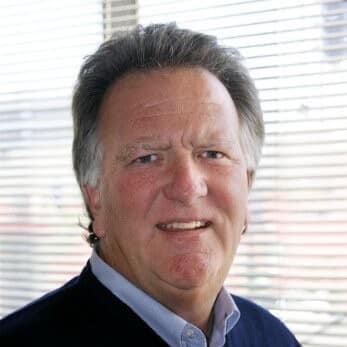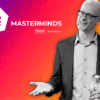
Seeing the Bigger Picture – Widening the Aperture for Organizational Performance
today2023.07.06. 5227 5

WHY SHOULD YOU CARE?
This article examines the limitations of goal-based frameworks in analyzing organizational performance. It advocates for a shift towards understanding unintended consequences and embracing possibilistic thinking. The importance of considering diverse audiences, social media, and legal compliance is discussed. By broadening perspectives, organizations can navigate a dynamic and interconnected world effectively.

Author: David C Forman – Author of Fearless HR and Fearless Talent Choices
When analyzing the performance of businesses, nonprofits, and governmental and community agencies, there is a tendency to focus on specific, immediate, and discrete goals. Examples of such goals might be: Improving employee experience, enhancing customer loyalty, reducing response time, minimizing supply chain disruptions, strengthening team cohesion, reducing quality errors, increasing the number of customers/clients/patients, streamlining costs, and improving revenues by a greater percentage than last year. Depending on the organization’s priorities, these can be critical goals to act upon.
Several techniques have arisen to help monitor and measure the achievement of such specific performance goals and objectives. Most of these techniques, whether SMART goals, KPIs, OKRs, or similar approaches, are predicated on goals that are discrete, narrowly focused, anticipated, and measurable. The Reverse Trifecta (The Reverse Trifecta – The HR Congress Magazine (hr-congress.com)) is a framework for operationalizing, not specific goals, but meaningful business impacts. This shift from goals to outcomes is a significant one.
But as useful as these goal and outcome implementation frameworks are, they are not enough to portray the full spectrum of organizational impacts in today’s highly volatile world. These frameworks are skewed toward examining a stated goal or outcome, and not the range of repercussions that might occur in pursuit of this goal. Failure to understand these possible ramifications can lead to faulty and incomplete solutions.
Leaders within organizations are also subject to reduced vision. A “Confirmation Bias” means that humans often see what they want to see, not what is actually happening. It is easier and takes less energy to fix problems that are readily apparent and familiar. Our brain seeks these familiar paths or shortcuts (heuristics) that require less energy over time. If, for example, the outcome being pursued is cost reduction, then the anticipated impacts might be money saved via salary reductions, reduced benefits, closed offices, or cuts in support. These impacts paint one picture. However, when the unanticipated consequences of the same actions are factored in (e.g., lower engagement scores, drop in customer satisfaction and loyalty, reduced ability to hire excellent talent, increase in unwanted turnover, decline in employer brand credibility, and competitive gains), the picture becomes very different. It may be that costs would still be reduced, but other actions could also be taken to limit the negative consequences of these other possible impacts.
A further difficulty in drawing attention to unanticipated consequences is that some unintended impacts are virtually impossible to fathom. Consider several actions by different governments over time. It is hard to imagine that the practice of scuttling warships in shallow waters would lead to the beneficial outcome of new reefs for fish, especially as global warming eroded coral ones. Or that the British government concerned about the rise of venomous snakes in India would offer a bounty for every dead snake. This worked fine until entrepreneurs began to breed and raise cobras for the bounty, thereby dramatically increasing the number of deadly vipers. Or, that the introduction of rabbits in Australia as a source of food made sense, until the rabbits multiplied beyond the wildest expectations and overran the Outback. Or, that steel protections in the United States negatively impacted the cost of automobile production and therefore the competitive positioning of an entire industry. These examples go on and on, as this problem has repeated itself year after year in country after country. If the effort is not made to foresee even far-reaching possibilities, then this picture, and its painful lessons, are repeated, over and over.
It takes intentional actions and perseverance to overcome both organizational and personal tendencies to see just what is immediately apparent or anticipated. It is easier to focus on the “seen and not the unseen.” These same proclivities were recognized centuries ago by Adam Smith and John Locke, among others. In the 1930s, the sociologist Robert Merton attracted more attention to the discrepancy between intended and unintended impacts in his article “Unintended Consequences of Purposive Social Action.” In the popular vernacular, there is not only Murphy’s Law (anything that can go wrong, will) but also The Law of Unintended Consequences (actions have both intended and unintended effects). So, economists and social scientists have recognized this distinction for a long time, but it has been largely brushed aside by politicians and the business world, until very recently.
Changing the Aperture
There are two practical steps that can be taken to open the aperture, see the bigger picture, and recognize both the seen and unseen consequences of organizational actions. These steps require taking the blinders off and thinking about possibilities that might occur. Possibilistic Thinking (Forman, 2020) is not intuitive or easy, and it is different than Probabilistic Thinking. It is not about what probably will occur but what might happen. Possibilistic Thinking takes a bit of fantasy, creative projection, relationship imagining, and acceptance that any idea is worth considering, not just those that are easily apparent and trackable.
The first of these two steps is to anticipate more thoroughly what might happen, and the second is to whom it might occur.
Unanticipated Consequences: “What Might Happen?”
Unlike the government examples just described, business and organizational impacts are easier to discern; it takes possibilistic thinking and not settling for simple, easy and superficial answers. There is also a growing literature and set of experiences to reference. Mortensen and Edmondson (2023) cite a recent Microsoft study that remote work, so necessary because of the pandemic, has made work relationships more siloed and has therefore resulted in reduced collaboration among colleagues. These impacts were not intended but seem to be side effects that could have been anticipated and addressed.
Another example of the difference between stated and actual consequences is the legacy of Jack Welch, the former CEO of General Electric from 1981 to 2001. In the name of improving productivity and shareholder value, Welch embarked on a series of actions that maximized shareholder results at all costs by implementing a rank and yank performance review process, supporting unbounded executive compensation, introducing severe cutbacks, abandoning manufacturing products for financial services, employing extensive outsourcing, and executing misguided acquisitions. Together these consequences destroyed a once iconic company, lost 250,000 jobs, decimated financial and growth opportunities for workers, and promoted a flawed corporate model that others tried to emulate for years (Gellen, 2022). The “seen picture” for Jack Welch was a short-term financial success, while the far more consequential “unseen picture” was a company, thousands of employees, and a system brought to its knees.
Perhaps the most consistent recognition of the distinction between intended and unintended effects of a solution can be seen on television every day. The listing of side effects for prescription drugs, mandated by law, can take three times longer to describe than the intended outcomes. Furthermore, these side effects often seem more serious and extreme than the condition itself. The unintended outcomes for prescription drugs, of course, can have a direct bearing on a person’s health and safety, so protections are needed; but, while less direct, perhaps the same can be said about possible organizational impacts and consequences. The title of Jeffrey Pfeffer’s book Dying for a Paycheck (2018) would seem to suggest that this linkage might be clearer than we think.
Impact on Diverse Audiences: “Who Might Be Impacted?”
It is often easier to identify the who than the what of unseen performance impacts. There is a limited set of audience possibilities beyond the usual choices of shareholders and company leaders. These include customers, partners, suppliers, contributors, investors, stakeholders, employees, contract workers, competitors, community members, and citizens. The next step, which is harder but essential to take, is to look deeper by segmenting audiences to discover if there are differences among groups of people. The differences, for example, between new, existing, long-term, or returning customers can be very insightful.
Goals or outcomes that help one group, but harm others, are easy to overlook if the full range of audiences is not arrayed for all to consider. Many governments and organizations have a history of ignoring certain groups of people while benefiting others, thereby limiting the picture that is seen and the reality that is experienced by all.
Coming Attractions: Greater Emphasis on Unanticipated Impacts
Businesses and organizations have been slow to react to the unanticipated impacts of actions. Traditions and incentives, as one might expect, are aligned to immediate and obvious priorities and to powerful groups of people. But this may be changing. There are several simultaneous forces that may be widening the aperture, seeing the bigger complete picture, and reducing errors of commission and omission.
1. Organizational Outcomes Beyond Financial Results. The core belief of this force is that organizations should be judged, not just on their financial achievements, but on the full range of their behavior and impacts. This pressure comes from activist investors, proactive board members, thought leaders, ESG (Environmental, Social, and Governance) proponents, and the public in general. The pressure gets ratcheted when, for example, ESG standards are converted into measures, indexes, and certifications. The Dow Jones Sustainability Index, for example, is one measure that compares different organizations’ scores on these performance standards. What gets measured gets noticed.
There is also pressure that emanates from the public push for organizations to be judged by multiple bottom lines, not just financial ones. This pressure is from community members, citizens, and most importantly employees. Employees want to work for organizations that stand for something beyond a paycheck; they want to make a difference in the larger community. They believe in value for citizens, not just shareholders and investors. They believe in purpose: Finding Meaning in Work: The Purpose Payoff – The HR Congress Magazine (hr-congress.com)
2. The Example of Social Media. Occasionally there is a cataclysmic change in the world that forces everyone to take a step back and see things differently. Often the events that cause this shift are disasters such as world wars or pandemics. The Internet certainly qualifies as such a massive change, as do the social media applications that run on web platforms. The intended effects of social media apps are laudatory: providing an electronic town hall for freedom of expression, enabling people to connect beyond their immediate circle of acquaintances, quickly sharing experiences and actions, instilling a sense of community across boundaries, providing a platform for the immediate sharing of fast-breaking events and unfiltered reactions, launching new business and market opportunities, and opening horizons for people who may not have had the opportunity to travel or pursue other opportunities.
But this is not the complete picture. Social media can also lead to dysfunction and actions that threaten norms and civil behavior. It starts with the core purpose of social media applications: Keeping many people on the site, returning to the site, and using the site as a launching platform so that advertisers have exposure to them. The stickier the platform, the better. The ways to keep people involved are largely 1) quick and easy ways to virtually connect, communicate, share, and express information and preferences, and 2) presenting sensational and unique information that often feeds on people’s insecurities and fears. The more outrageous, the better. These, in turn, can lead to consequences such as people being addicted to their mobile devices, social interactions limited to quick phrases and emojis, people not wishing to engage in in-depth conversations, judgments being made without accountability or justification, accepting sensational information in lieu of legitimate news or truth, following unconventional views down endless rabbit holes, and forming shallow communities based on fears or superficial interests.
The main point is that social media is a compelling example of the risks of not addressing the unintended consequences that might occur, even for popular and well-intentioned actions.
3. Legal Compliance. As we have seen in the case of prescription drugs, the law can dictate that possible side effects must be declared. When public safety, health, and well-being are at stake, there is a duty and responsibility to make this information known to any prospective patient.
Legal compliance can also be applied, if the political will is strong enough, to organizational behavior that may negatively impact the values and principles of a people and society. In a democratic society, these values would encompass the right to vote, freedom of choice, free speech, and being treated equally under the law. In the economic sphere, a key democratic principle is a level of commercial playing field so that all organizations, (whether big or small, powerful or not) have the same chance to succeed.
Final Words: Let the Light In
There are many factors that restrict the picture that we see when analyzing organizational performance: Tradition, ease, comfort, bias, potential gain, avoiding possible bad news, or the desire to shape a good story. Traditional goal-based frameworks (e.g., SMART goals or OKRs) are useful but limited. They focus on the immediate, intended, obvious, and measurable, but are often blind to what might happen. It is necessary to open the aperture, let more light in, see the bigger picture, and anticipate both the seen and unseen consequences of actions. Remember the lessons from rabbits, snakes, Jack Welch, coral reefs, Eliquis, and using emojis in interactions with people in lieu of conversations.
In these times of unrelenting change, global interdependency, and uncertain futures, it is more important than ever to prepare for possible, not just likely, futures. Murphy’s Law and the Law of Unintended Consequences have merged. It is not a question if Unintended Consequences will happen, they will. The better question is: Will we be ready?
An important caveat to this discussion is that just because the focus has been on unintended consequences, it does not mean that intended actions don’t count. They do. It is important, for example, to achieve business and financial goals; if not, the organization withers. It’s the equilibrium between intended and unintended consequences that must be balanced more effectively.
Opening up the aperture lets more light in, and more effects—both beneficial and detrimental– can be seen. With greater illumination, the picture becomes clearer, and the surprises are minimized. Transactions are more open and transparent, and, yes, less secretive. A great juror, Louis Brandeis, made this famous statement over a century ago.
“Sunlight is the best of disinfectants.”
So it is.

Written by: Eva Mezosi
Future of Work HR Strategy Learning & Development Strategy & Transformation
Previous post

- 626
labelArticles today2023.07.03.
The High and Mighty: How Status Hinders Leaders’ Understanding of Others
WHY SHOULD YOU CARE? Uncover the startling findings that reveal how power and status can hinder leaders’ ability to accurately gauge others’ emotions and perspectives, shedding light on the potential [...]
Similar posts

labelArticles today2024.10.21.
The success-recipe to build agile and future-ready organizations in 2025 and beyond







Post comments (0)